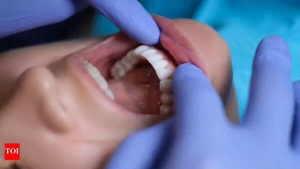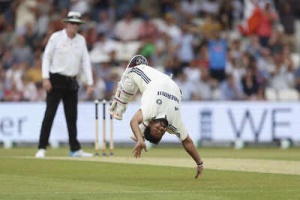Hair breakage can make your strands appear weak, frizzy, and shorter than they actually are. Instead of growing to their full potential, hair snaps due to internal or external factors that weaken its structure. From harsh styling habits and chemical treatments to nutritional deficiencies and health conditions, many triggers can contribute to fragile, damaged strands. Recognising the underlying cause is the first step in finding the right solution. With the right care, diet, and lifestyle changes, you can strengthen your hair, restore its shine, and prevent further breakage.
Common reasons your hair breaks and what you can do about it
Hair products
Chemical treatments such as colouring, bleaching, relaxing, or perming weaken the protein structure of hair, leaving it brittle and prone to breakage. According to a study published in NIH, even daily use of shampoos with a high pH can roughen the cuticle, stripping away protective oils. Over time, this causes hair to snap easily. Switching to gentle, sulphate-free products can help preserve strength.
Poor nutrition
According to Harvard Health Publishing, hair health is directly linked to diet. Deficiencies in essential nutrients like iron, zinc, biotin, and vitamins A and D can slow growth and make strands weaker. Protein is also crucial since hair is made of keratin, a protein fibre. On the other hand, over-consuming supplements, especially vitamin A, may also trigger shedding and breakage.
A balanced diet is key to strong, resilient hair.
Thyroid conditions
Thyroid hormones play a big role in regulating hair growth. Both an underactive thyroid (hypothyroidism) and an overactive thyroid (hyperthyroidism) can cause hair to become dry, thin, and fragile. If hair breakage is accompanied by symptoms like weight changes, fatigue, or mood swings, it is worth consulting a healthcare provider for a thyroid check.
Tight hairstyles
Constantly pulling hair into tight ponytails, buns, or braids puts excessive strain on the scalp. This repeated tension can cause breakage near the roots and even lead to traction alopecia, a type of hair loss. Choosing looser styles and using fabric-covered hair ties instead of rubber bands can reduce the damage.
Eating disorders
Eating disorders often result in malnutrition, which deprives hair of the nutrients it needs to grow. As a result, hair becomes thinner, weaker, and more prone to breaking. Studies suggest that up to half of those with eating disorders experience noticeable hair issues, making nutritional recovery essential for hair repair.
Stress
Chronic stress raises cortisol levels, which can disrupt the natural hair cycle. This may cause hair to shed more quickly and grow back weaker. Stress-related conditions like telogen effluvium often make breakage worse, highlighting the importance of managing stress through rest, mindfulness, or lifestyle changes.
Overbrushing
Brushing hair too often, especially when it is wet, creates friction that weakens strands and causes them to snap. Wet hair is more elastic and delicate, so aggressive combing can lead to breakage. Using a wide-tooth comb and detangling gently helps protect fragile strands.
Trichotillomania
Trichotillomania is a psychological condition where a person feels compelled to pull out their own hair. This habit damages follicles and results in uneven breakage or bald patches. Treatment may involve therapy, support groups, or medication to help manage the urge.
Hair extensions
While extensions and weaves can enhance appearance, they often put extra tension on natural hair. If worn too tightly or left in for long periods, they can cause significant breakage. Opting for lighter styles and taking breaks between applications can help reduce the strain.
Trichorrhexis Nodosa
This condition weakens the hair shaft and makes it prone to snapping. Often triggered by excessive heat styling, chemical damage, or repeated trauma, it gives hair a frayed appearance that makes it seem like it is not growing. Reducing harsh treatments is crucial for recovery.
Over-styling
Frequent use of heat tools such as blow-dryers, curling irons, and straighteners dries out hair and breaks down its protective cuticle. Without this barrier, strands lose moisture and become brittle. Limiting heat styling and using protective sprays can prevent further breakage.
Trichothiodystrophy
This rare genetic condition affects how hair is formed, making it fragile, sparse, and prone to breaking. It is usually linked with other health challenges, so medical advice is necessary for proper management.
Swimming in Pools
Chlorine in swimming pools strips the natural oils that keep hair hydrated, leaving it dry and breakable. Rinsing hair before and after swimming, applying a protective conditioner, or wearing a swim cap can help minimise the damage.
How to prevent and repair hair breakage
To repair hair, focus on restoring moisture and strength. Use gentle shampoos and hydrating conditioners, let hair air-dry whenever possible, and avoid tight hairstyles. Reducing heat and chemical styling also allows hair to recover. A balanced diet rich in vitamins and proteins provides the nutrients hair needs to grow stronger.
If breakage continues despite these changes, consult a healthcare provider. Underlying conditions such as thyroid imbalance or nutritional deficiencies may need to be addressed.
Also Read: How to heal blisters safely at home with natural remedies and prevention tips
 Greg Chappell: Rishabh Pant is Revolutionizing Cricket with Unorthodox Style
Greg Chappell: Rishabh Pant is Revolutionizing Cricket with Unorthodox Style
 Earth's Mantle Unleashes Volcanic Fury, Carving New Ocean in Africa
Earth's Mantle Unleashes Volcanic Fury, Carving New Ocean in Africa
 Najmul Hossain Resigns as Bangladesh Test Captain After Sri Lanka Defeat
Najmul Hossain Resigns as Bangladesh Test Captain After Sri Lanka Defeat
 Smith Targets Test Return After Baseball Cage Rehab in New York
Smith Targets Test Return After Baseball Cage Rehab in New York
 Oral Cancer: Spotting the Signs, Understanding the Risks, and Why Early Detection is Key
Oral Cancer: Spotting the Signs, Understanding the Risks, and Why Early Detection is Key
 Is Daily Bowel Movement Necessary? When Irregularity Signals a Health Issue
Is Daily Bowel Movement Necessary? When Irregularity Signals a Health Issue
 Shimron Hetmyer's Last-Gasp Six Stuns MI New York, Seals Record MLC Chase for Seattle Orcas
Shimron Hetmyer's Last-Gasp Six Stuns MI New York, Seals Record MLC Chase for Seattle Orcas
 Rishabh Pant's Somersault Celebration Draws "Unnecessary" Remark From Doctor Who Aided Recovery
Rishabh Pant's Somersault Celebration Draws "Unnecessary" Remark From Doctor Who Aided Recovery
 India's First Dengue Vaccine Nears Finish Line: Phase 3 Trials Show Promise
India's First Dengue Vaccine Nears Finish Line: Phase 3 Trials Show Promise
 Asia Cup 2025: ACC Reportedly Targets September Start Amid Rising Hopes, Aims for Schedule Release Next Month
Asia Cup 2025: ACC Reportedly Targets September Start Amid Rising Hopes, Aims for Schedule Release Next Month